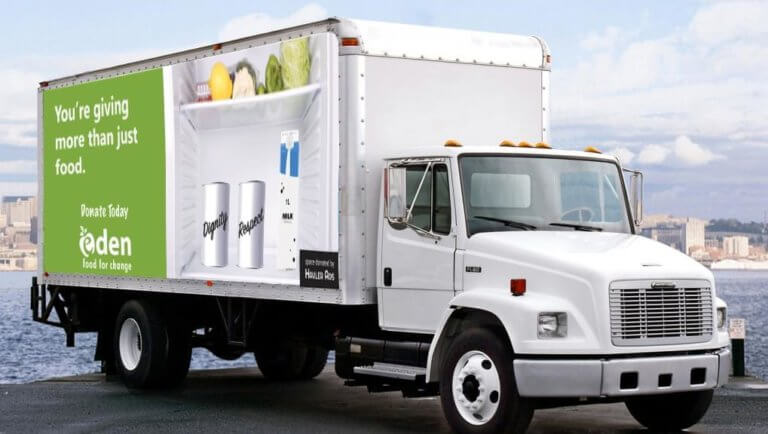
Non-profits exist for one reason and one reason only: to make our world better. They are the heroes on a mission, the champions of causes, and the catalysts for positive change. Non-profit organizations come in all shapes and sizes, tirelessly working to make our world a better place.
They come in all shapes and sizes. From community groups fundraising for a new playground to large-scale organizations pushing through bleeding-edge medical research and developments. “They give shape to our boldest dreams, highest ideals, and noblest causes.” Over 1.3 million non-profits operate in the United States alone. The history of voluntary, charitable organizations goes back centuries. And while some of the first fundraising campaigns emerged in the 19th century, it wasn’t until the 1940s that they became the present we know today. But how do they amplify their voices? How do they reach the hearts and minds of those who share their passion?
Enter the captivating world of out-of-home (OOH) advertising.
The OOH advertising industry’s involvement with non-profits really hit steam about the same time. Just as charitable organizations have a rich history that dates back centuries, the involvement of OOH advertising in supporting non-profits began to gain momentum in the 1940s. These two powerful forces converged, creating a dynamic partnership that has transformed the way non-profits connect with communities and drive change.
Picture this: a vibrant billboard towering above a bustling city street, capturing the attention of thousands of passersby. It’s not just an advertisement; it’s a call to action, a beacon of hope. OOH advertising offers non-profits a visually captivating canvas to tell their stories, raise awareness, and inspire action. It gives shape to their boldest dreams and projects their noble causes onto the collective consciousness.
From powerful imagery to compelling messaging, OOH campaigns have provided non-profits with a platform to engage and captivate audiences in ways that no other medium can. They transform ordinary spaces into thought-provoking landscapes, sparking conversations and igniting empathy.
But it’s not just about the visuals. OOH advertising amplifies the voices of non-profits by strategically placing their messages in high-traffic areas, ensuring maximum exposure and impact. It’s about being present where the community gathers, be it at bus stops, train stations, or shopping centres. It’s about meeting people where they are and inviting them to be part of something greater than themselves.
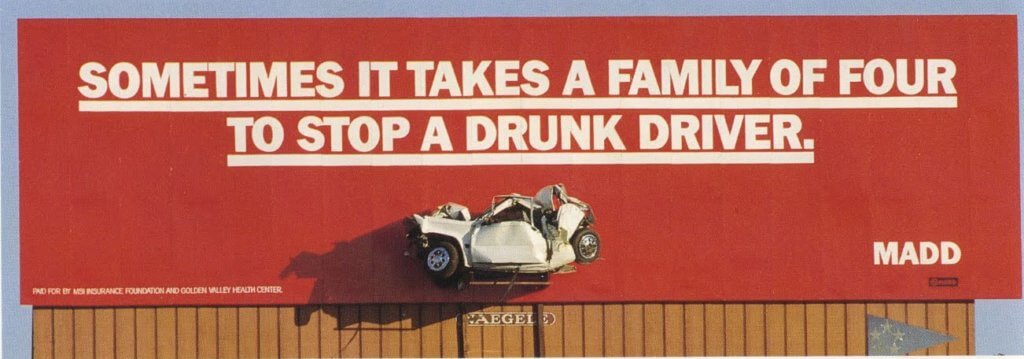
Source: blogspot.com
While the first billboard PSAs had to do with wartime efforts, the success of these campaigns created a legacy that we feel to this day. Non-profits run OOH advertising campaigns for many reasons. These reasons can include increasing public awareness of their cause, promoting certain behaviors (think MADD’s successful anti-drunk-driving billboard campaigns), and, of course, fundraising. Changing the world takes time, energy, and money. Lots of money. Non-profits rely on donations and sponsorships to operate. In return, donors expect their contributions to be used wisely. So, non-profits often rely on creative advertising options to reach the public. As one of the oldest and still most successful advertising mediums out there, OOH advertising often gives non-profits a boost to the ROI that other mediums can’t.
Close your eyes. Imagine you are driving down the highway or through downtown. Look to your left and right. What do you see? Odds are, it is hard to imagine cruising through these areas without seeing outdoor advertisements. Whether bus shelter panels, mobile billboard advertisements on cars, taxis, busses, or moving truck side ads, they are a part of our everyday life. UnlikeYouTubeads or TV and radio commercials, you can’t skip or tune out outdoor advertising. Our eyes scan the streets in front of us, ensuring that we have enough information to safely move through traffic or crowds. OOH advertising capitalizes on this behavior by creating eye-catching ads. These outdoor advertisements engage with people’s emotions, influencing their decision-making. In the time it takes for an eye to flicker across a traditional billboard or to catch a fleeting glimpse of a mobile truck advertisement, a connection is made. Heads crane as the billboards pass, necks swivel to catch more of what just passed by. Combine that impression with creative storytelling or with emerging data analysis and tracking technology and imagine how OOH advertising can become a force for change. Check out these campaigns to see OOH advertising for good in action.
Movember
This non-profit got its start in 2003 as the brainchild of two Aussies, Travis Garone and Luke Slattery. In a bar sharing drinks, these two men noticed that the mustache had become an endangered species. This “mo”ment became the inspiration for “Movember”, a month-long campaign that asks individuals to grow out their facial fuzz to raise awareness for men’s health issues such as testicular and prostate cancer, as well as men’s mental health issues including suicide. In their first campaign, they were able to convince just 30 men to take part. By 2009, 200,095 Mo Bros and Mo Sisters had taken part. By 2020, from the first 30 mustaches, the movement has grown to over 5 million people taking part. And with that, over $911 million has been raised for men’s causes. And outdoor advertising has been part of that growth.
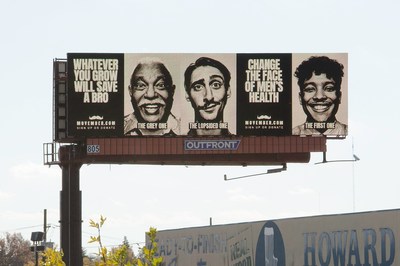
Source: www.outfrontmedia.com
In 2016, for the second year in a row, OOH advertiser OutFront Media was chosen to run ads for the non-profit. Spanning three cities in three months, OOH advertising including “digital billboards, bus kings, and in-car subway assets” were seen in New York, Chicago, and Philadelphia. The billboard displayed three different “Mo’s”, “The Grey One”, “The Lopsided One”, and “The First One” to illustrate that all mo’s are good mo’s when it comes to the cause.
Stand Up To Cancer
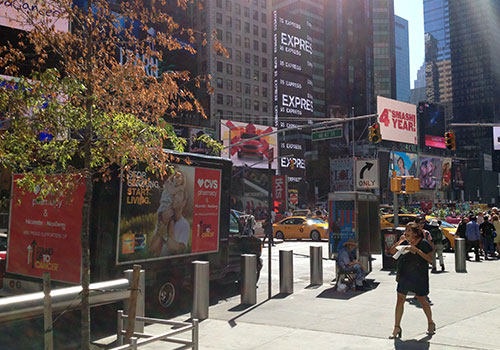
Source: Do It Outdoors
In the United States, one in two men and one in three women will be diagnosed with cancer in their lifetime. To fight cancer’s spread, Stand Up To Cancer was founded. This non-profit uses social movement generation to fundraise for medical research. In 2016, this global non-profit partnered with medical giant GlaxoSmithKline, to convince people to quit their smoking habits. In cities like Boston, Los Angeles, Washington, and New York, these mobile billboard trucks promoted the cause and street teams handed out information packets to people on the street. Taking the message to the streets allowed the non-profit to reach their target audience as they were out and about.
Eden Food For Change
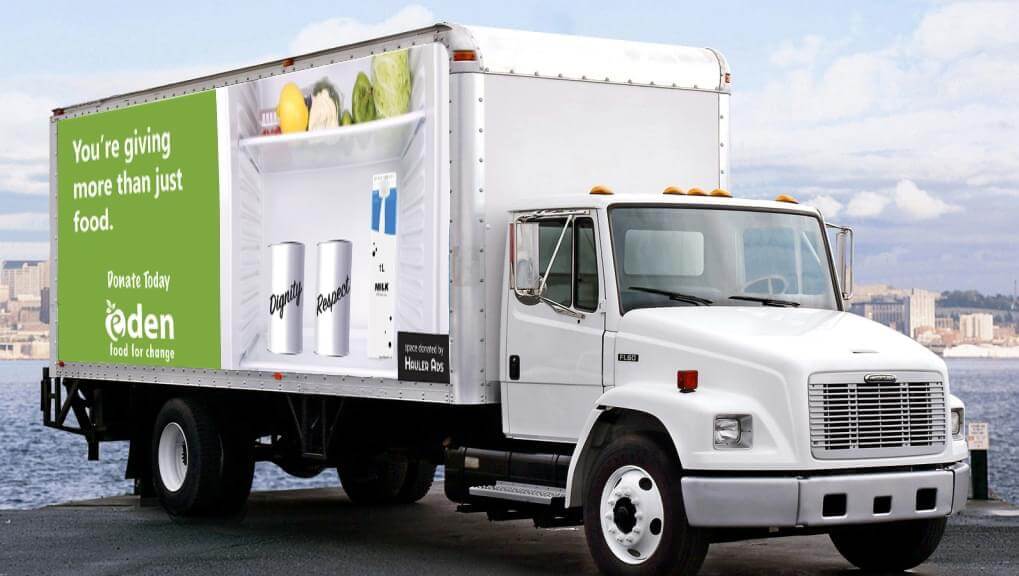
Source: Movia
At Movia, one of our most fulfilling OOH advertising campaigns was done for Eden Food For Change. What first started as an unofficial food bank operating out of a church in 1989 grew into a non-profit community food center serving Western Mississauga, Ontario, Canada. Their approach to food insecurity creates a more sustainable, long-term solution to the issue. Beyond feeding people, this non-profit also operates a test kitchen where participants can improve their cooking skills. From October 2, 2016, to December 2, 2016, our mobile billboard cruised the Mississauga and Peel region, building brand awareness for the charity. By campaigns end, we had logged over seven million impressions. Helping the charity to increase public awareness and donations for this worthwhile cause.
How The Industry Gives Back
When it comes to advertising and marketing, non-profits cannot play at the same level that large corporations can, and so often rely on corporate partnerships, pro bono services, and donated ad space to reach their goals. Often advertisers will donate ad space, lowered non-profit rates, content creation services, and materials to worthwhile causes. The OOH industry, for example, donates over $450 million dollars a year to charitable and non-profit groups. The Out of Home Advertising Association of America (OAAA) website notes that the industry “regularly provides free advertising space for charitable causes, a practice dating back to the early 1900s.” The OAAA helps facilitate this in a few ways:
First, by connecting non-profits with OOH advertisers in their region who they can contact for direct assistance. And secondly, by partnering with selected non-profits. Called National Service Partners, the OAAA goes beyond offering ad space to full, comprehensive advertising support. These partners gain “substantial operational and promotional support” (OAAA), including “creating the campaign, finding a printer, designing a solicitation, promotion to OAAA members, and public relations post-campaign launch.”
National Service Partner campaigns can be found on the OAAA website. Advertisers looking to give back can select the organization and PSA campaign they wish to support. Once a campaign is selected, the advertiser commits to providing advertising space on a “space available basis” for month-long periods. OOH advertisers wanting to give back can donate monthly ad space, on billboards, mobile truck advertising, or other mediums. This partnership makes the process for giving back streamlined. Non-profit organizations wanting to become a National Service Partner can apply here for consideration.
Last Thoughts
Non-profits and OOH advertising have almost a hundred years of history working to make this world a better place. And this partnership continues to grow stronger. With every year, as technology advances and cities grow, OOH advertising’s potential to reach more and more people increases. We are where the people are. From digital out-of-home to traditional billboards to moving truck ads, there are a wide range of options for non-profits.


